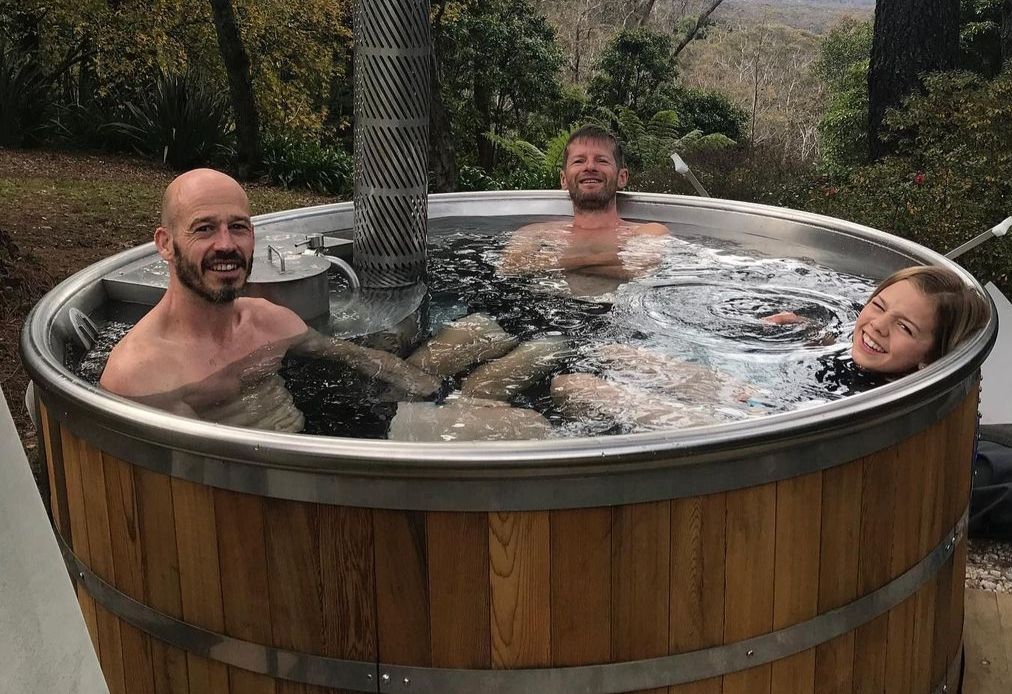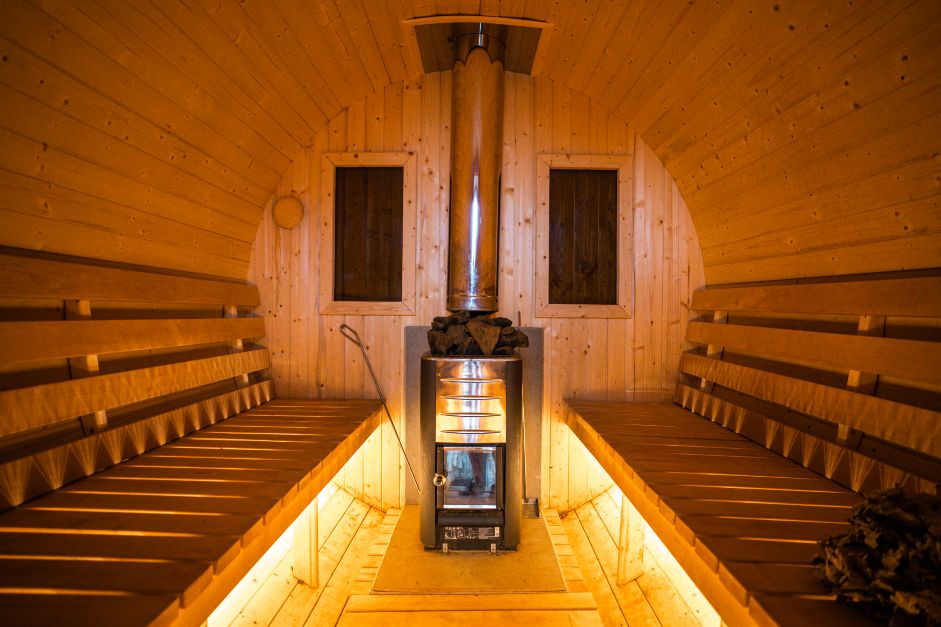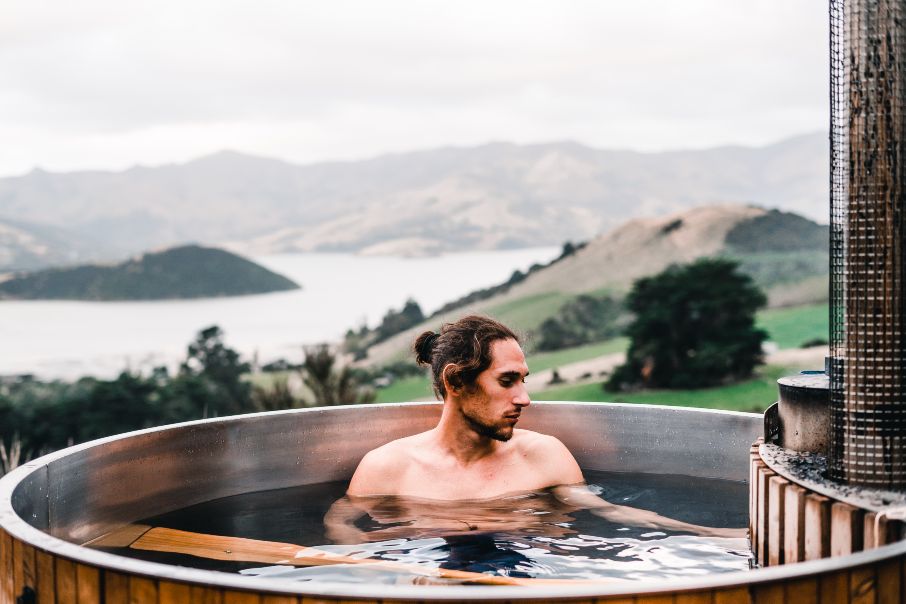Using Hot Tubs and Saunas for High-Altitude Running Adaptation
Mark Green

Have you ever thought about using saunas or hot tubs to improve your running? It almost sounds too good to be true.
How can sitting in a sauna or a hot tub make you run faster?
When you run at high altitudes, the air is thinner, the terrain feels tougher, and your body feels like it has to work overtime to keep you moving. The best way to prepare your body for high altitude racing is to train at high altitude, but this can be a very difficult and expensive thing to organise, so is not realistically available to many people.
Good news though, there are some clever ways to simulate high-altitude conditions and prepare your body for the challenge, even from the comfort of your own home!
This is where heat adaptation methods, like spa pools and saunas come into play.
You might be wondering, “How can sitting in a sauna or soaking in a hot tub prepare me for the thin air and rocky trails of a high-altitude race?” Well, it turns out that heat exposure— if done correctly—can mimic some of the stress your body undergoes at altitude, helping you to build tolerance and enhance your endurance.
What Is Heat Adaptation?
Heat adaptation is essentially training your body to deal with the stress that higher temperatures place on your cardiovascular and thermoregulatory systems. Training at high altitude encourages your body to produce more red blood cells to compensate for the lack of oxygen, heat training encourages your body to adapt in a similar way, improving blood flow, increasing your plasma volume, and stimulating your body to produce more red blood cells.
Here is the science behind it:
When you expose your body to heat over time, your plasma volume increases. This is crucial because plasma is the liquid component of your blood that carries oxygen and nutrients to your muscles and organs. As plasma volume increases, your heart doesn’t have to work as hard to pump blood, and you become more efficient at delivering oxygen to your muscles.
The increased plasma volume triggers your body to produce more red blood cells, which directly enhances your oxygen-carrying capacity.
The result? You’ll be better equipped to handle the demands of high-altitude running, where oxygen is scarcer and the body’s ability to transport it becomes even more important.
In simple terms, the heat exposure you get from a sauna or spa pool can help you cope better with the physical and mental stress of running at high altitude. You’re essentially tricking your body into believing it’s facing a similar challenge.
Why Saunas and Hot Tubs?
1. Saunas: A Sweat-Inducing Solution

Saunas are probably the most popular heat adaptation tool. The intense heat from a sauna raises your body temperature, pushing your cardiovascular system to work harder in order to cool you down. The result? Improved blood circulation, increased heart rate, and a greater overall tolerance to heat.
In addition to these physiological changes, saunas also help activate heat shock proteins (HSPs) which improve cellular repair and aid in your body’s ability to handle stressful situations—perfect for those tough, breathless stretches in high-altitude races.
But how does this tie into altitude? When you spend time in a sauna, your body becomes more efficient at managing its internal temperature and improving blood flow, which is essentially training your body for conditions where oxygen is scarce—like on top of a mountain.
Recommended Sauna Temperature Range: To make the most of sauna training, aim for a temperature between 80-100°C (176-212°F). This is hot enough to activate your thermoregulatory system without pushing you to the point of discomfort or overheating. Sessions typically last between 15-30 minutes, depending on your experience and heat tolerance.
2. Hot Tubs: Relaxing Yet Beneficial

Hot tubs can help to reduce muscle fatigue while offering similar benefits to heat exposure. When you immerse yourself in the hot water, your heart rate rises, and blood flow improves, just like in a sauna, but wth a less intense heat.
While it’s a more relaxed approach, the somewhat gentle heat from a hot tub still helps to improve circulation and aid in recovery. It can be used as a relatively gentle introduction to heat adaptation before moving to some more intense sauna sessions.
Recommended Hot Tub Temperature Range: For a hot tub, the ideal temperature for heat adaptation is typically 39-40°C (102-104°F). This range is hot enough to provide the desired cardiovascular benefits while being tolerable enough for longer sessions, usually between 20-40 minutes. While not as intense as a sauna, it still provides enough heat exposure to stimulate beneficial changes in your circulatory system.
How to Use Saunas and Hot Tubs Effectively for High-Altitude Adaptation
You need to introduce heat exposure to your training regime gradually and listening to your body, just like you should with any new training modality.
- Start Slowly: If you’re new to heat training, begin with short sauna sessions—around 10 to 15 minutes—and work your way up to 20-30 minutes. For hot tubs, start with shorter soaks of 20-30 minutes at a time, ensuring you’re staying hydrated throughout. Your body will slowly adapt, and you’ll begin to notice the benefits over time.
- Frequency: Consistency is key. For optimal heat adaptation, aim for 3 to 4 sauna sessions per week. Hot tubs can be used more frequently for recovery and relaxation but still offer physiological benefits when used consistently.
- Hydration: You’ll sweat a lot in both saunas and hot tubs, so it’s crucial to hydrate properly. Dehydration can lead to fatigue, cramps, and even worse, so make sure you’re replenishing fluids before and after sessions.
- Heat train immediately after a run: Once you are comfortable with your sauna and/or hot tub sessions, you should start trying to time them so that they are immediately after a running session. This will further enhance your heat adaptation as your body is already warmed up / hot from your run.
The Mental Edge
High-altitude races are as much about mental endurance as they are about physical stamina. The ability to push through discomfort—whether it’s from a lack of oxygen, rocky terrain, or fatigue—is a huge factor in success. Heat exposure, especially in saunas, can teach you to embrace discomfort. The longer you sit with the heat, the more you’ll understand your body’s signals and the better you’ll get at managing them. This can directly translate into mental resilience during those mentally tough moments of a high-altitude race.
Don’t Skip Recovery
It’s easy to get caught up in pushing your limits, but heat adaptation is a long-term process. Make sure you’re balancing these heat sessions with adequate recovery—especially in the early stages. Your body will need time to adapt to the stress, and overdoing it could lead to exhaustion or burnout.
Also, keep in mind that heat adaptation won’t completely replace the benefits of actual altitude exposure if you’re training for a high-altitude event. However, it’s a valuable tool to add to your toolkit, especially when you can’t access the mountains or if you need a break from physical training.
In Conclusion
Heat adaptation methods like sauna sessions and hot tub soaks might sound like luxury options, but when used properly, they can be a game-changer in your preparation for high-altitude running. By increasing circulation, improving cardiovascular efficiency, and boosting mental toughness, these methods help condition your body to cope with the physiological and psychological stressors of altitude. Plus, the increase in plasma volume and red blood cell production means that, over time, your body becomes much better at delivering oxygen to your muscles—exactly what you need when tackling those steep, oxygen-deprived mountain trails.